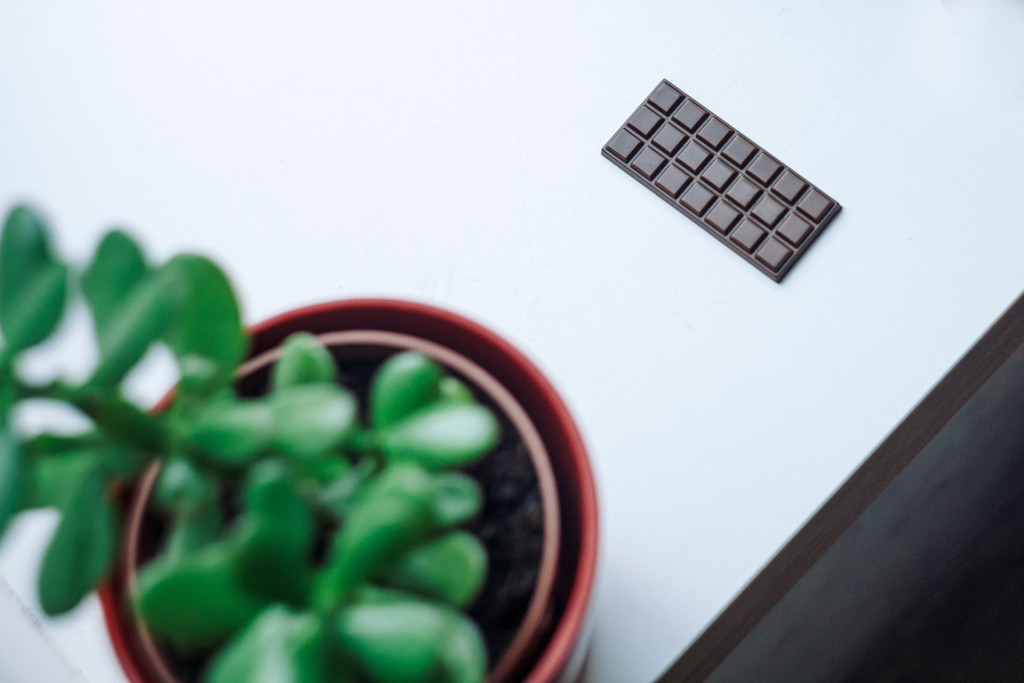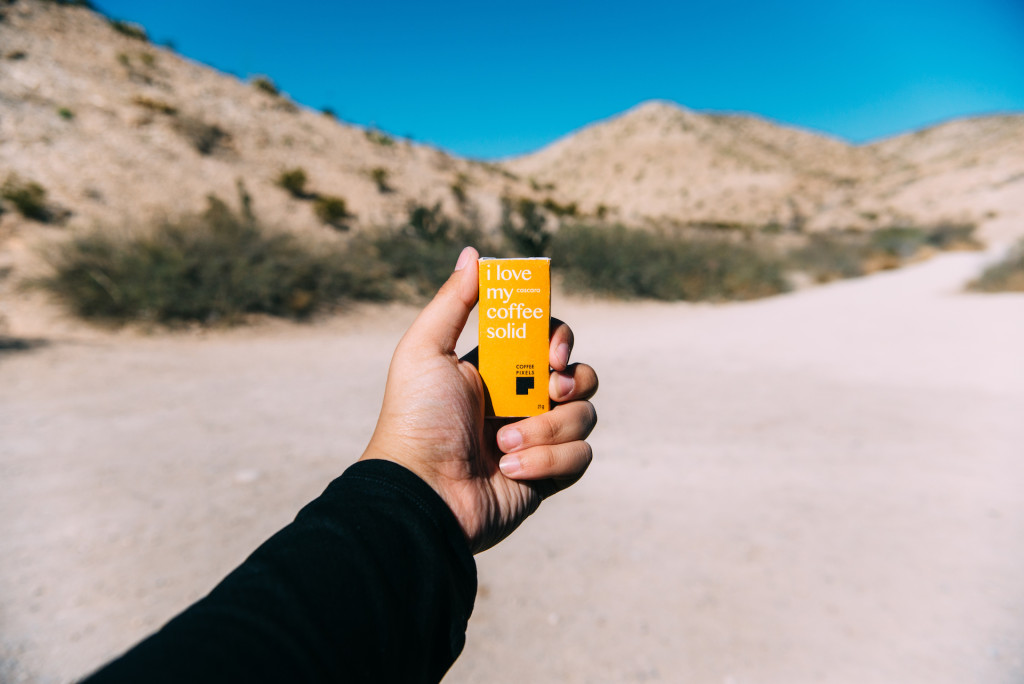People prefer their coffee in different forms. Some people like their coffee black, some cannot live without their cappuccino. For others filter coffee is the only option. But have you thought of an edible coffee in a solid form?
A solid coffee bar that you can take with you and eat it whenever you want. That is the product that Raivis Vaitekuns and his team at Coffee Pixels, Riga, work on. We tasted the early prototypes of Coffee Pixels at the Barista Camp Estonia in 2016 and could not wait to hear from Raivis about their progress.
Hi Raivis, what brought you from liquid coffee to solid coffee?
The main reason that brought us here seems to be our strive to expand specialty coffee experience outside the walls of a coffee shop. There were some other ideas as well, but the one that survived and expanded above any expectations was making coffee edible.

How would you describe Coffee Pixels to those who haven’t had the chance to try it yet?
The easiest way would be imagining dark and rich chocolate that tastes just like coffee. One [Coffee Pixels bar] is fruity, with gentle acidity of dried-fruit. The other is more mellow, more traditional, with smooth, caramel notes. Meanwhile, we think that calling the Coffee Pixels a chocolate would be misleading, as it’s made of, tastes like and gives you a caffeine [dose] just like coffee!
What is the inspiration behind Coffee Pixels? We have seen cascara chocolate recipes around …
The cascara recipes were published at the stage where we were fine-tuning our recipes. It was quite a surprise that someone else in Europe was doing something similar.
The inspiration for us came from an older video found online. In it, they tried to substitute cocoa beans with coffee beans in the making of a chocolate bar. We tried that recipe but weren’t very fond of the result. So instead of giving up we started to experiment.

Could you share a little bit of the process behind making solid coffee?
Well, only a bit. Ingredient-wise there are coffee beans, cascara or skimmed milk powder, cocoa butter (we use deodorised one, for the coffee flavour to stand out), a bit of pure cane sugar and pink salt for the perfect balance. It’s all combined in a process similar to making chocolate.
Of course, there are many small tricks that make Coffee Pixels as delicious as they are, but let’s not take away all the magic!
We tried Coffee Pixels for the first time during the Barista Camp in Estonia, back in October. How has the project developed since then?
The ones you tried at the Barista Camp were quite early prototypes. Since then we have worked on the recipe to make the best out of Coffee Pixels. The flavor has improved, quality consistency issues are sorted out, and we’re more happy with physical properties of the product. Meanwhile, there’s a lot of planning and paperwork to be done for raising funds for the next development stage.

What was the biggest challenge so far?
Shifting the paradigm that coffee can be more than a drink, that it also can be an edible product. People are used to coffee as a drink, and drinking rituals have a strong place in everyone’s life. We love a quality cup of coffee ourselves, we’re not competing with coffee as a drink. But with Coffee Pixels we are taking coffee to places it wasn’t available before. Also managing and growing a production company is a new thing for us. Yes, it’s coffee, but it’s still very different from a coffee shop.
You are talking about almost zero waste production. Could you elaborate on that?
For a start, let’s compare Coffee Pixels with coffee as a drink. When coffee is brewed, only around 20% of the bean mass is extracted with water, the rest 80% usually are disposed. There are many ways how to recycle those, but the systems to execute that on a commercial scale are still in their infancy.
To produce Coffee Pixels we use whole coffee cherry – the roasted bean and coffee fruit with pulp, skin. The only major part (around 15% of the cherry) left out of our hands is the parchment husk – a thin shell that sits between coffee pulp and bean. Usually, it’s removed before shipping the coffee and is being used by farmers at the origin as fuel, similarly as timber. Parchment husk is almost pure cellulose, therefore could be recycled, for example into a paper. We’d love to wrap ‘pixels’ in the coffee paper sometime in the future, but first, all the variables of impact have to be calculated. Shipping low-cost materials overseas might not be the best use of resources!
Using both the skin and the seed of the same cherry–coming from the same tree–is still a dream. Yes, a complicated one, but not impossible I’d say.
You are known and respected member of the specialty coffee community in Europe. Who else belongs to the core team at Coffee Pixels?
We are four people at the moment. The founders are two of my cousins and me—the same team that started Miit Coffee back in 2010. Besides the founders, we have a production manager Agnija, who just won the national Brewers Cup. There is still an open position for a marketing professional to join the core team.

What are your plans for the coming months? Where do you see the future of Coffee Pixels?
Currently, most focus goes to planning out the next development stage to raise the production capacity. Meanwhile, we’re looking for sales partners abroad. There are some coffee shops in Lithuania and Estonia already selling Coffee Pixels, but that’s not the market we plan to stick with. Nordic countries and central Europe are the markets to go to next. We hope to be quick with all the homework and to manage to participate at the London coffee week. World of Coffee Budapest is a must, so you’ll meet us there as well.
Note: All images courtesy of Coffee Pixels.

